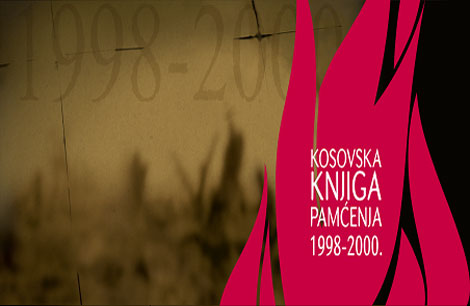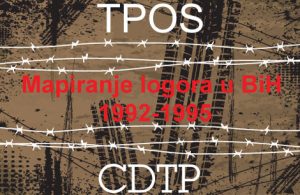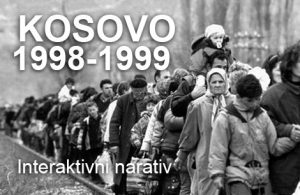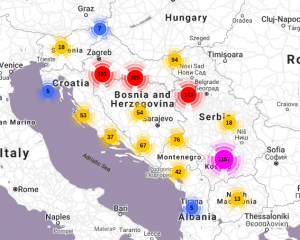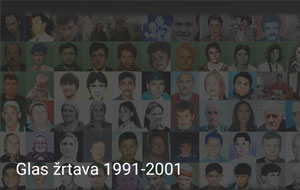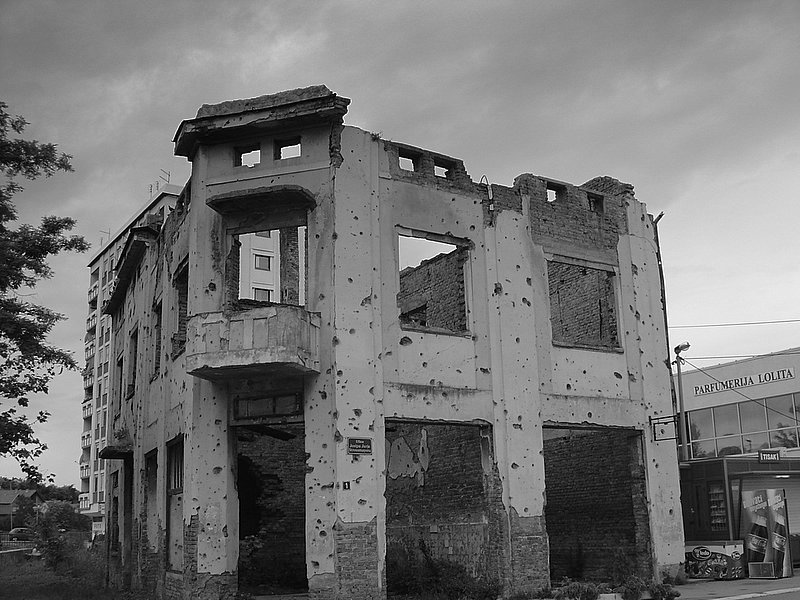
30.09.2020.
Moral Remembrance and New Inequalities
Lea David, memorialization, remembranceA passage from Lea David’s article “Moral Remembrance and New Inequalities”, initially published in Global Perspectives journal
The article traces the emergence of the novel phenomenon known as “moral remembrance” (MR). MR refers to the standardized set of norms, promoted through the human rights infrastructures of world polity, in which societies are supposed to deal with the legacies of mass human rights abuses. This vision has adopted, over the past forty years, the three main principles of “facing the past,” “a duty to remember,” and having a “victim-centered approach.” Following the emergence of MR, I demonstrate what happens when the human rights–sponsored MR clashes with the nation-state-sponsored memorialization agenda and why decoupling from the “victim-centered approach” results, more often than not, in hierarchies of victimhood and, consequently, the production of new societal inequalities. I suggest here that the relationship between MR and the nationalist use of memorialization processes needs to be understood from the perspective of economic corruption, the politics of opportunism, and competing authorities.
[…]
Setting the stage for inequality: Moral remembrance vs. The nationstate-sponsored memorialization agenda
The implementation of MR into different geopolitical contexts (often through peace agreements) has wide and diverse outcomes. I have discussed elsewhere (David 2017; 2020, Forthcoming) the wrongness of the presumption that “proper” memorialization is a crucial step in establishing moral responsibility for past atrocities and human rights values. This is not only because the development of human rights in postwar Europe was born from anticommunist, freemarket, and social conservative stock rather than out of a commitment to universal values (Duranti 2017), but also because human rights adopted the false assumptions that Freudian-derived individual psychology, as a therapeutic remedy, has beneficial psychological consequences for the “healing” of posttotalitarian or post-conflict societies (David 2017). Here, I wish to address briefly how an MR-promoted victim-centered approach contributes to the emergence of social inequalities and creates new societal margins as a result of the clashes between the nationalist and human rights agendas.
It is important to stress that the evidence from around the globe shows that the normative pressures of the human rights memorialization agenda have made a difference for many worldwide: there is a better appreciation for the legal consequences of human rights abuses; there is a wider recognition of suffering parties, including reparations and institutional support; and public recognition for human rights abuses has materialized through memorial sites, museums, and commemorative activities. In many ways, the change brought about through the MR agenda and the work of international and local human rights NGOs and civil society groups is profound, affecting—on a global scale—conventional and normative aspects of the way we remember and construct our identities. Having said that, the impact of the human rights memorialization agenda is at the same time troubling, pointing to the wider intersection of power and societal structures that, contrary to what is desired, contribute to the further creation of inequalities and often result in the strengthening of nationalist sentiments.
To start with, the schematic conceptualization of past human rights abuses, based on the simplified and purified categories of victims, perpetrators, and bystanders, became an ideological cement conceptualized as a universal pattern and the only framework through which memorialization should take place when it comes to past human rights abuses. By the 1990s, a triad matrix of simplified categories of victim/perpetrator/bystander was already well embedded in discourses on guilt, accountability, and remembrance. Raul Hilberg (1992, ix), one of the greatest historians of World War II, framed the entire Holocaust through categories of victim, perpetrator, and bystander. In his words, “these three groups are distinct from each other and they did not dissolve in their lifetime.” He described perpetrators as participants that ascribed doing something impersonal to their position and duties. Victims, he argued, as a whole, remain an amorphous mass and are remembered mainly for what happened to them (as opposed to who they were). Bystanders were not willing to hurt victims, nor did they wish to be hurt by perpetrators. However, in one way or another, they were involved (Hilberg 1992). Yet this tendency to universalize victims as a special kind of people in fact depoliticizes victims by defining them as ahistorical, universal humanitarian subjects (Mutua 2001).
This dividing into categorical orders of victim, perpetrator, or bystander, as promoted by human rights advocates and enforced through human rights infrastructures, together with the triad matrix of “facing the past,” “duty to remember,” and a “justice for victims” approach, inflicts a new power dynamic on the places affected by massive human rights abuses. On the one hand, the adoption of the human rights memorialization agenda brings new and underrepresented actors, such as the victim groups, to the forefront of politics, and they get to participate in their representation and in the fulfillment of their rights. On the other hand, the inclusion of new political actors results in a twofold outcome: first, those who are granted the opportunity to access the bureaucratic nation-state apparatus and resources need to give something in return; and secondly, this Moral Remembrance and New Inequalities allegedly “inclusive” politics produces even more polarized margins where those unable or unwilling to participate are left excluded, marginalized, and invisible, leaving many in poverty—left alone and undiscernible.
To unpack those claims, we need to understand the ways in which the human rights memorialization agenda impacts post-conflict (and often in-conflict) realities. The human rights–sponsored worldview is promoted through two main funding channels. One stream is meant to infuse money to states in order to establish strong governmental institutions; to promote reforms in the realm of law, health and educational systems, the security sector, and trade; and to strengthen the civil sector, all for the sake of state and peace building (Bouris 2010) through what is called a “liberal peace” strategy. The new liberal peace was closely linked to the debate on conflict prevention and conflict resolution, arguing that democracies tend to safeguard peace and are inherently linked to political liberalism, which is the most common form applied to peace building as well as state building (Richmond 2007, 86). Liberal peace focuses on society and the building of institutions to which NGOs and civil society also contribute (Bouris 2010). A crucial part of this liberal peace agenda was understood not only through state-building capacities but also through the implementation of MR as a guarantee for preventing the recurrence of violence and for the enhancement of human rights values. However, the inflow of much-needed funds directly to the state apparatus often has a direct relationship with a variety of conditionality clauses that prize efforts to reform and to “properly” face massive past human rights abuses, getting, in return (among other things), incentives to trade, acceptance into different international organizations, or an additional influx of resources. With the ability of the political elite to report back on progress in state- and peace-building efforts, those funds become a stable source of state income, allegedly used as a propeller for democratic change. Hence, states are often incentivized to adopt human rights, and as part of that effort, to also face their troubled past.
For example, in the case of a protracted conflict, such as in Israel and Palestine, which has never been subject to transitional justice efforts, such as trials or any other state-sponsored measures to address past human rights abuses, with the signing of the Oslo Accords in 1993 the peace-building agenda was fiercely pushed forward, with millions of dollars invested in strengthening civil society. The amount of aid for peace-building activities from donors (such as the United States, the European Union, the World Bank, and the United Nations) ballooned: by 2010 forty-two donor countries and twenty UN and other multilateral agencies were involved in peace-building activities, and aid rose yearly from US$178.74 million in 1993 to US$2.52 billion by 2010 (M. Turner 2012). In postwar Bosnia, the United States, through USAID’s Democracy Network, and the European Union, through the Community Assistance for Reconstruction, Development and Stabilization and the European Initiative for Democracy and Human Rights, have disbursed dozens of millions of dollars to develop the civil sector and promote peace building (Micinski 2016; Fagan 2013). Similarly, since the genocide in Rwanda, development agencies have spent tens of millions of dollars on justice, governance, security, peace building, and reconciliation issues. As a result, Rwanda has emerged as one of the countries where the new post-conflict agenda is being most strongly implemented, despite extremely difficult conditions (Uvin 2001). Hence, sponsoring the liberal peace, as well as state- and peace-building activities in post-conflict settings, became a regular praxis, if not a norm.
On the other side of the human rights peace-building donation stream are local and international NGOs whose role from the outset of the conflict is indispensable. They are there first to provide muchneeded psychological, logistical, and material support to the suffering parties. Having said that, human rights (I)NGOs are also the first to introduce clearcut categories of who is to be regarded as a victim or a perpetrator. All of those trained professionals, as well as enthusiasts and activists, irrespective of the, at times, substantial differences between their approaches and methods, are on the same mission to direct the parties involved—even if they don’t deal with memorialization processes per se—on how to achieve a particular vision of the future by embracing certain ways in which they are supposed to frame, remember, and commemorate their troubled past. This desired vision of remembering atrocities in a very particular way, atrocities committed by different parties in wars or under totalitarian regimes, is based on the assumption that a “proper” framing of remembrance represents an effective means for promoting universalist human rights values in conflict and post-conflict settings (David 2017). In other words, there is an unquestionable presumption under which advocates for human rights operate: that a proper memorialization of a difficult past is essential for both establishing democracy and promoting human rights.
Human rights, however, within the nation-state, are always in a foreign territory. Whereas they are deeply and widely embedded at the world polity level, within nation-states human rights cannot compete with nationalist infrastructures. Niklas Luhmann, one of the greatest contributors to making theoretical grounds for the sociology of human rights, a vastly neglected area of sociological inquiry, argued that the emergence of human rights goes hand in hand with the development of modern society, with the intent to institutionalize specific mechanisms to increase the stability and protection of the individual, suggesting that constitutional and human rights are not a creation of the law but are prelegal as a social institution, as a self-protecting device of society (Verschraegen 2002). This rather thought-provoking idea does not explain efficiently the relationship between human rights and the nationalist project. In fact, it seems that nationalism serves better as a mechanism of functional differentiation to secure group (but not always individual) stability. Even in cases in which nationalism absorbed and adopted human rights as its impression management agenda—such as, for example, in the case of Denmark in the 1990s—the inclusion of human rights appears only as long as it serves the nationalist project (Malešević 2013). To be clear, enforcing human rights policies in a world dominated by the nation-state model of social organization always lands on particular historical settings. Human rights, with the center of their power being in the world polity, are always unavoidably filtered through the needs of a state. This means that, in practice, some states will welcome some rights but reject other rights, perceiving those as damaging to their own interests. Hence, the way in which human rights will be accepted, rejected (fully or partially), or modified inevitably depends on the already deeply developed and rooted relationship that exists with certain segments of the national past, as well as current political realities.
The tension that comes with adopting MR and its implementation by the state apparatus has to be understood through the ways in which different actors and agents of memory frame past atrocities: for the nation-state, past atrocities are framed as war activities (with inevitable casualties) that are necessary to protect the nation, whereas advocates for human rights understand past atrocities as massive human rights abuses. States claim a seemingly natural right to exercise their power to recognize, commemorate, incorporate, and mythologize certain war-related events in order to promote and protect their nation-state projects, while others are officially marginalized or forgotten. War-related practices are intended to further valorize and promote the nationally suitable narrative in such a way as to justify it historically (J. Young 1993). This is particularly true for nation-states that are facing serious obstacles in the process of making meaning out of suffering (Hutchinson 2009) as a result of the problematic and contested elements of their past, which may include accusations of atrocities committed, the violation of international laws of war, human rights violations, and the like. Advocates for human rights, on the other hand, by framing war-related activities from the perspective of human rights abuses, pressure states to adopt the threefold principles of MR—facing the past, duty to remember, and the victim-centered principle—pushing them to alter the ethnocentric promotion of their contested past.
The human rights memorialization agenda is, in that sense, particularly subject to potential clashes. The believed truth regarding the past, sponsored by the state, is often in sharp dissonance with the truth mandated in the name of human rights. The clash here is obvious, expected, and well documented. We are well aware of the “paradox of empty promises,” where governments often adopt human rights norms of behaviors as a matter of window dressing, radically decoupling policy from practice and, at times, exacerbating negative human rights practices (Hafner‐Burton and Tsutsui 2005). With the human rights memorialization agenda, governments, if not conditioned otherwise, are likely to ignore it. Big powers, such as the United States, or even the European Union,16 will not adhere—to the same degree—to the standards they themselves set. Yet again, through their power positions in international bodies, they will push for other, weaker states to comply with the human rights memorialization agenda as a means of pacifying and even policing those states (David 2018).
[…]
Lea David
The complete article with references

